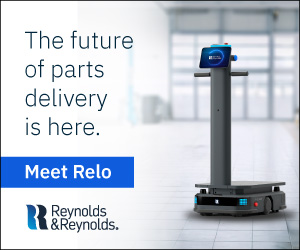 Dealers can’t control external forces but they can improve their internal processes and support their people
Dealers can’t control external forces but they can improve their internal processes and support their people
In early March, I was having lunch with a good friend of mine, a senior leader at a Canadian subsidiary of a global car manufacturer.
Of course, the currents through our conversation were tariff terrorism and unrelenting newsreels of information coming our way. I asked my friend what they thought their dealer network should be doing to dig in and get as ready as possible for what was ahead.
Interestingly, we began the conversation by rewinding through two decades of car business ups and downs. There was early agreement that the tariff threat doesn’t follow an exact playbook that we can crib from, such as a financial crisis, pandemic, or supply-chain bottleneck.
That said, there were definitely change management and adaptation skills dealers were pushed to embrace throughout the last 20 years that will be vital to lean on for what is to come.
One of the first that rang true was to strengthen our existing partnerships and find new ones. Just as Canada needs to do, dealers should seek to rediscover their network of friends and supporters to bolster the effort.
The first partnership dealers should look at is the one with their OEM. If there are fractures in communication or differences of opinion, now is the time to reset and repair.
Equally imperative is the need for dealers to reinforce their teams of people. No matter what department or skill level, everyone in the dealership is vulnerable to stress and worry around the current situation.
Dealership managers and OEM representatives should start having more in person meetings to set the tone for handling the uncertain events coming our way.
I say in person because so much dealer-OEM conversation happens via email, and the day-to-day stress of operations combined with gloom-and-doom news can easily lead to harsh wording and adversarial sparring at the keyboard.
Equally imperative is the need for dealers to reinforce their teams of people. No matter what department or skill level, everyone in the dealership is vulnerable to stress and worry around the current situation.
Similarly to the pandemic, leaders in the dealership need to stand tall and be present. They should be informed and speak confidently about evolving strategy while continuing to take the pulse of engagement throughout the team. If efficiencies need to be created, leaders should prepare to be as transparent as possible in the face of concerned employees.
Smoothing out highs and lows should be an ongoing objective in the dealership, regardless of external factors.
It was too easy for everyone to fall prey to the bullish market in recent years and forget to remain steadfast in a consistent process.
Dealers who always shine a bright spotlight on Fixed Operations KPIs and see them as something they can control in the dealership will always see positive returns from that focus.
While sometimes not as glamorous as what is going on in the showroom, the parts and service departments, when run well, are the lifeblood of the organization. They usually employ a majority of dealership employees and bear a large share of expense lines. By pushing the right buttons and pulling the right levers, quick and impactful gains in Fixed Operations can help make choppy economic waters smoother for dealerships and the people within them.
Speaking of expense, I would strongly recommend resisting the urge to cut spending via a knee-jerk reaction to one or two rough months.
Reactive management ultimately creates an elastic band effect and can actually harm your business more than keeping some of those expenses in place.
Take advertising for example, as one of the high-visibility financial line-items in the crosshairs, it is easy to take a buzzsaw to these initiatives and make quick “gains” to temporarily bolster operating profit.
Why not take a spend smarter approach and look to see if the money can be re-allocated first? Do you have a good handle on your digital showroom and message?
If a dealer’s SEM and SEO efforts are not clearly measurable, this should be the primary focus before simply reducing spend. Similarly, taking funds from conventional advertising like magazine ads or billboards and dumping it into digital will not directly translate into the immediate conversion effect that dealers desire.
Get a handle on the numbers first, and you may discover that overall spending can be reduced and made more effective for the long-term.
As we finished our lunch, my friend and I came away with the very positive conclusion that automotive dealers in Canada were prepared and made for this moment.
Focusing on the essentials of partnerships, people, processes, and measured efficiency will help differentiate Canadian dealers in trade-war performance and for anything else that will inevitably come their way.

















